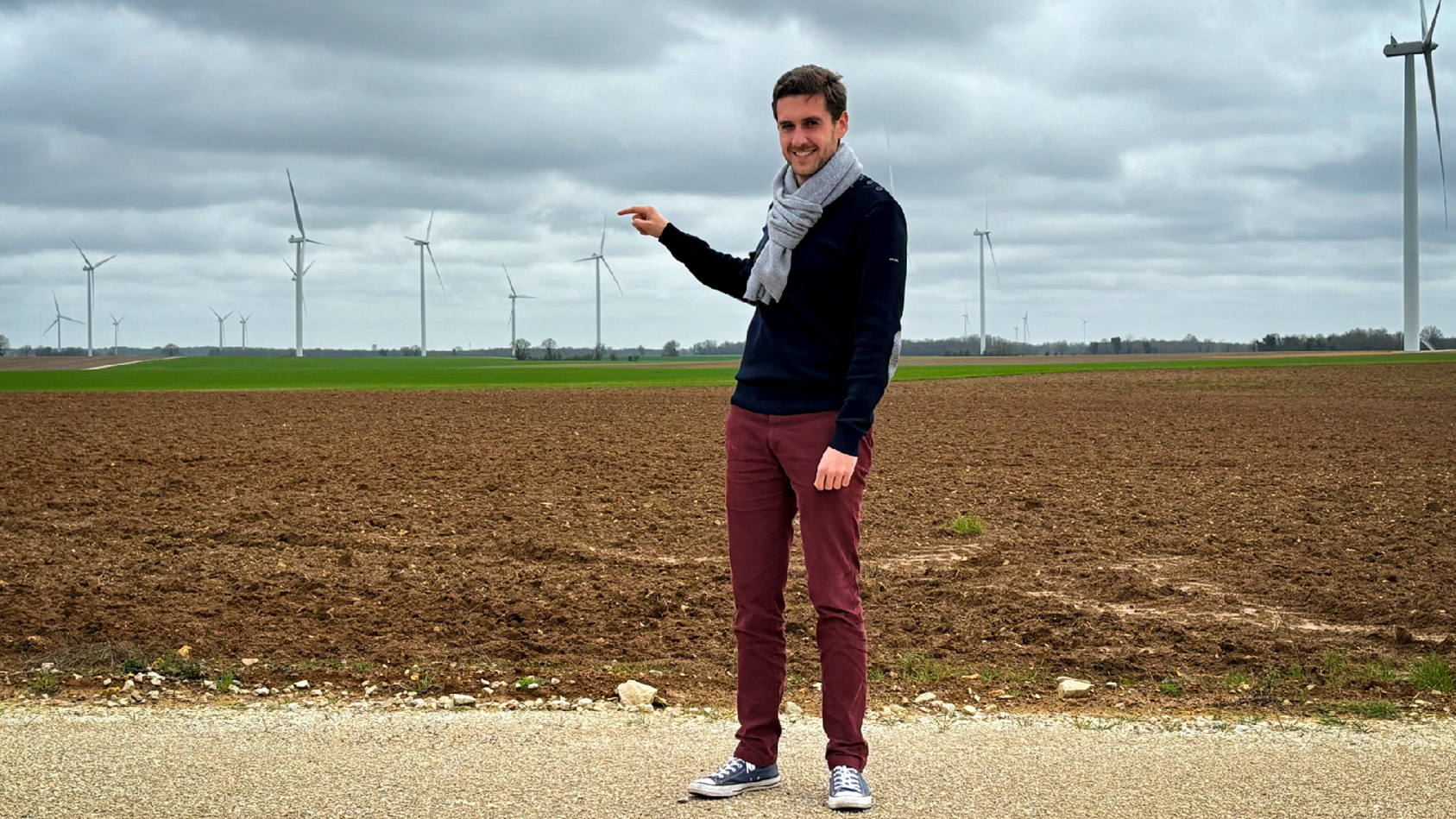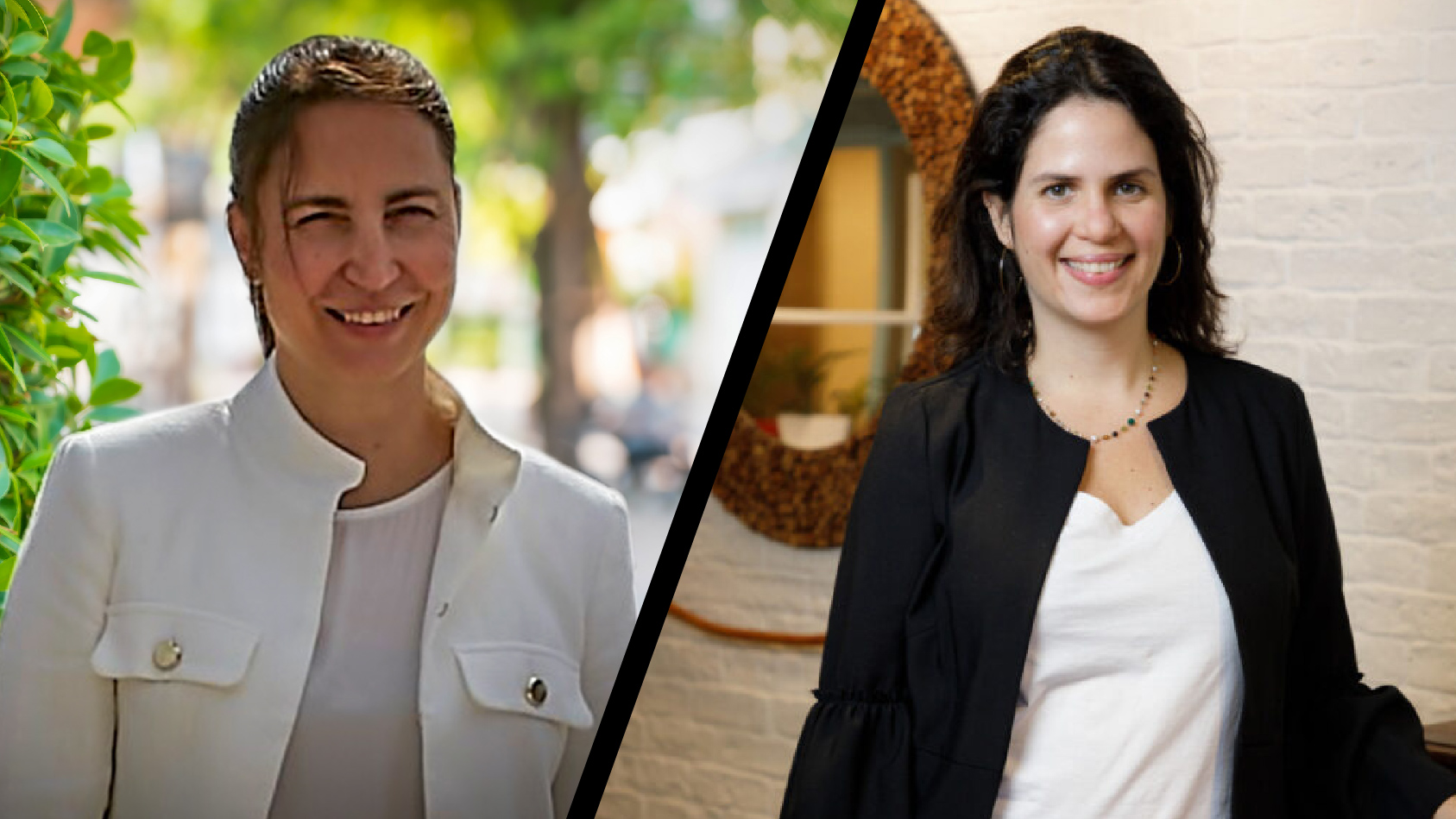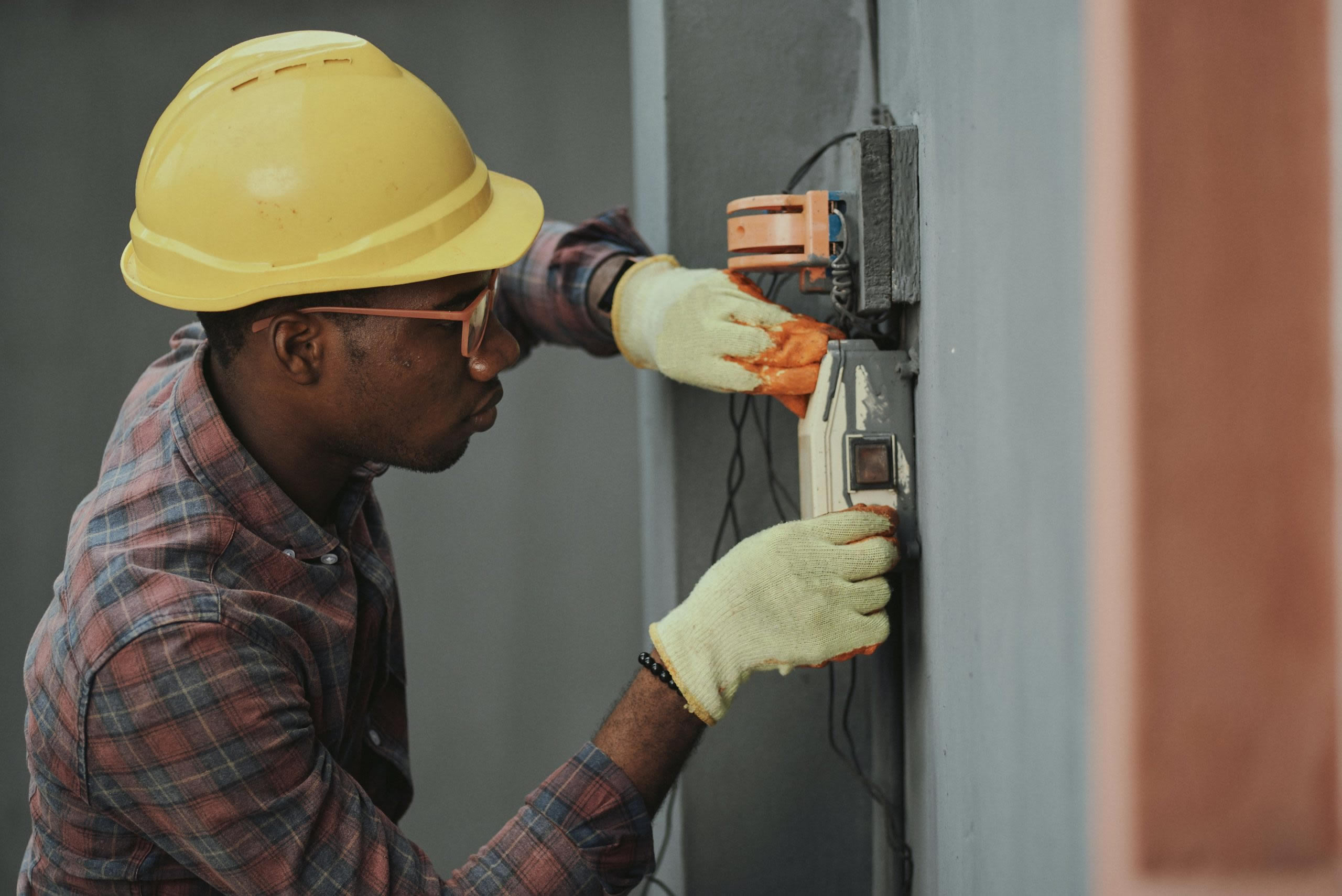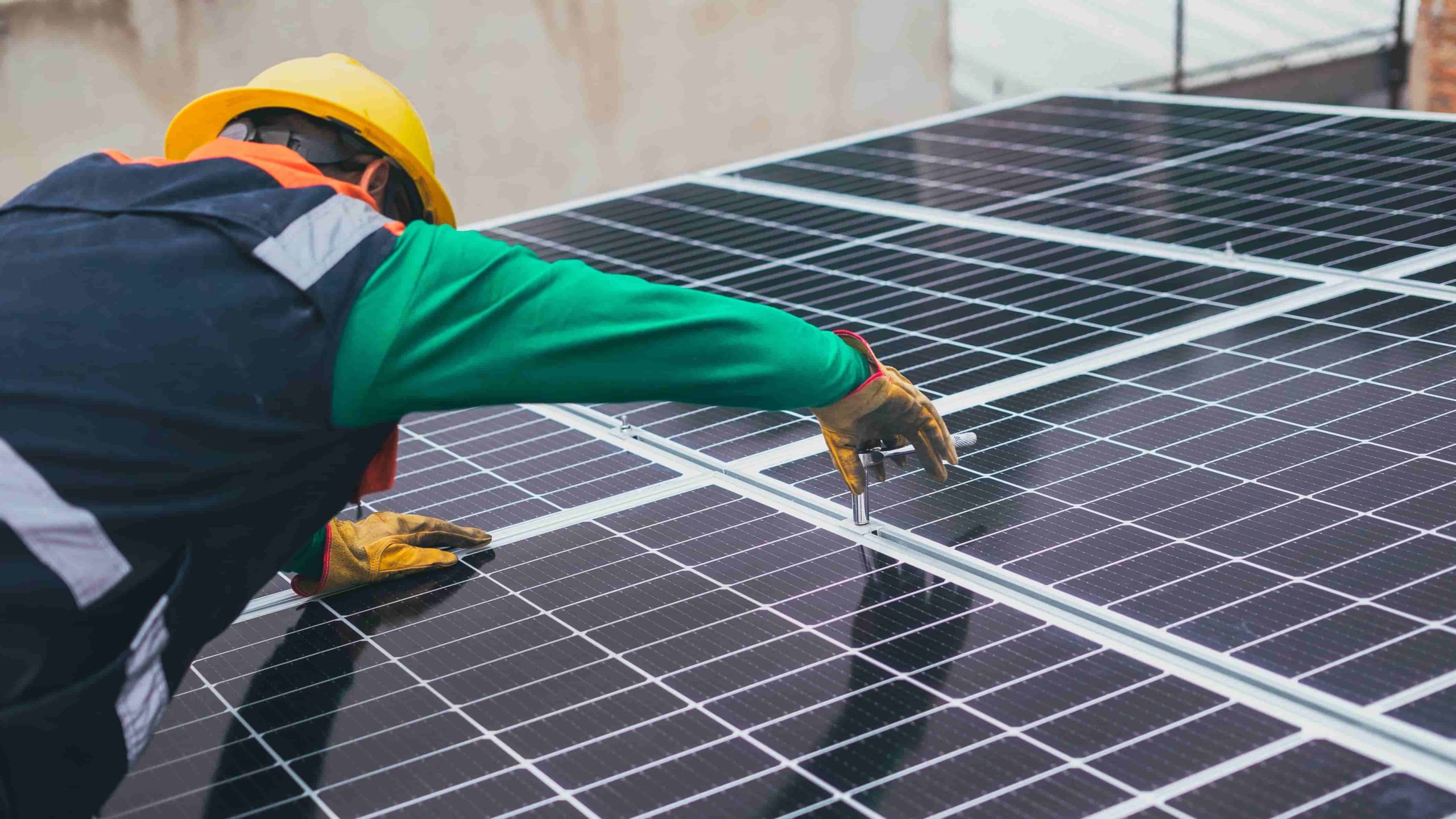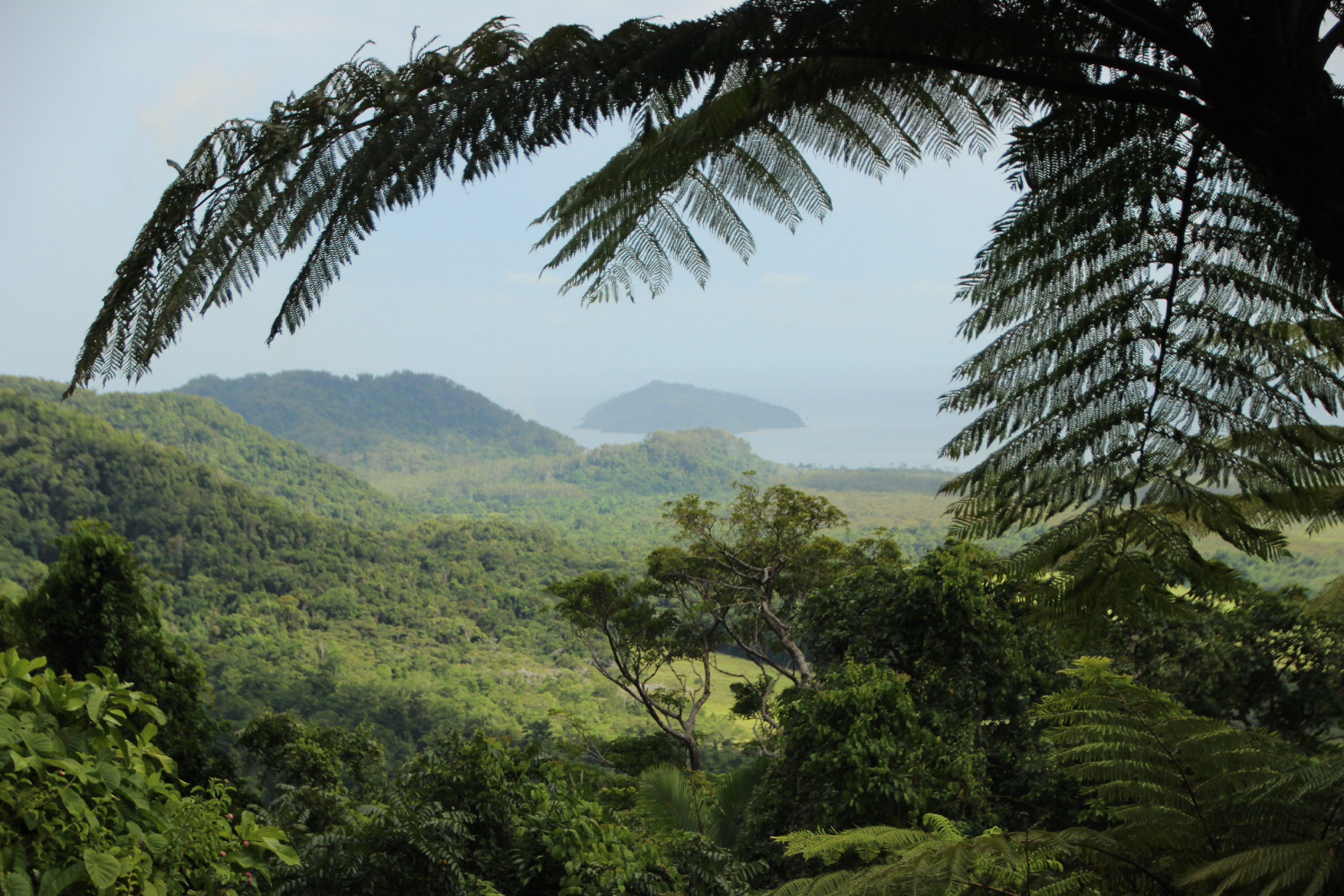Voltalia’s commitment to biomass and electricity storage
Only 11% of France’s electricity is generated from renewable sources. The main obstacle to a fully renewable energy mix is the intermittency of certain alternative sources, making continuous production impossible. Could biomass and electrical energy storage provide a sustainable solution to this problem? Our engineers are exploring these two promising avenues every day.
What are biomass and electricity storage?
Biomass
The term “biomass” refers to any organic matter (forest residues, sawmill by-products, sugar cane residues, etc.) that can be used to generate electricity from the heat released during combustion.
The process is as follows:
- collection
- shredding
- conversion to energy by combustion, gasification, fermentation or pyrolysis
- transformation into electrical energy
- injection into the consumption network (electricity, heating, biofuel production, etc.)
It has many advantages:
- reduced CO2 emissions
- reduced carbon footprint of processed waste
- continuous energy production and supply
However, generating electricity from biomass presents two major challenges.
1. The complexity of the supply chain: how do you find the best local sources to limit the carbon footprint of transporting biomass?
2. Environmental impact: using biomass requires responsible sourcing to ensure forests are replenished as sustainably as possible.
“Biomass is the number one source of renewable energy in France and worldwide. At Voltalia, we’re exploring other sources of biomass, such as furniture waste, which could be recycled to produce energy.”
Maxime Jal Head of the Biomass Center of Expertise at Voltalia
Electricity storage
In the case of solar power, variations in sunlight throughout the day limit the amount of energy that can be generated. When there is less irradiance, power production decreases, creating a mismatch with demand — hence the importance of storage!
Here’s how it works: some of the energy produced by the solar farm is fed back into the grid, but in the event of overproduction (on sunny days or when consumption is low), this part of the photovoltaic production is stored in batteries. Inverters then discharge these batteries and deliver electricity to the grid when needed.
Electrical energy storage provides several benefits:
▪ reuse of the excess renewable energy at any time
▪ decarbonized power generation at peak times on the grid
▪ reduced need to start thermal power plants at peak times
▪ real-time power supply to maintain the balance between production and consumption on the grid
French Guiana: an exemplary case
French Guiana currently generates about 60% of its electricity from renewable sources. The territory even set itself the goal of reaching 100% by 2023 and has implemented innovative solutions for this purpose.
Non-interconnected territories (ZNI, i.e. “Zones Non Interconnectées”), such as the French Overseas Departments and Territories, must be completely self-sufficient. Power outages are a real problem — to the extent that they have become part of the local political discourse. Stabilizing the balance between the production and consumption of energy is crucial, especially in these sensitive regions.
The Sable Blanc solar park
The Sable Blanc solar park, located in Mana, represents:
• 10,000 photovoltaic panels installed on a plot of white sand
• electrical storage batteries with a capacity of 10,000 kWh
• equivalent to carbon-free electricity for 6,400 residents from sunrise to 9 p.m.
This park was designed for sustainability. Thanks to the low carbon footprint of the battery and solar panels, it’s considered the greenest power plant in French Guiana!
“Voltalia is now operating the first electricity storage facility in French Guiana, located in Mana. The ‘Mana Energie Services’ unit has prevented more than twenty power cuts or load shedding incidents since 2020.”
Hubert Herbaux Asset Owner at Voltalia
The Cacao power plant
With 83,000 km² of forest, French Guiana is France’s most densely forested department. This makes it an ideal location for the Cacao power plant, which burns wood waste from nearby forestry operations and sawmills. The plant produces enough energy to supply 16,000 people and replaces conventional diesel power plants.
In terms of carbon footprint, the Cocoa power plant avoids the emission of 28,500 tons of CO2 per year.
Meeting the growing local demand for renewable energy also means contributing to the global energy transition. Voltalia is committed to finding solutions that meet the dual objectives of providing a reliable energy supply to the population and promoting the development and production of renewable and low-carbon energy sources. Challenge accepted!
